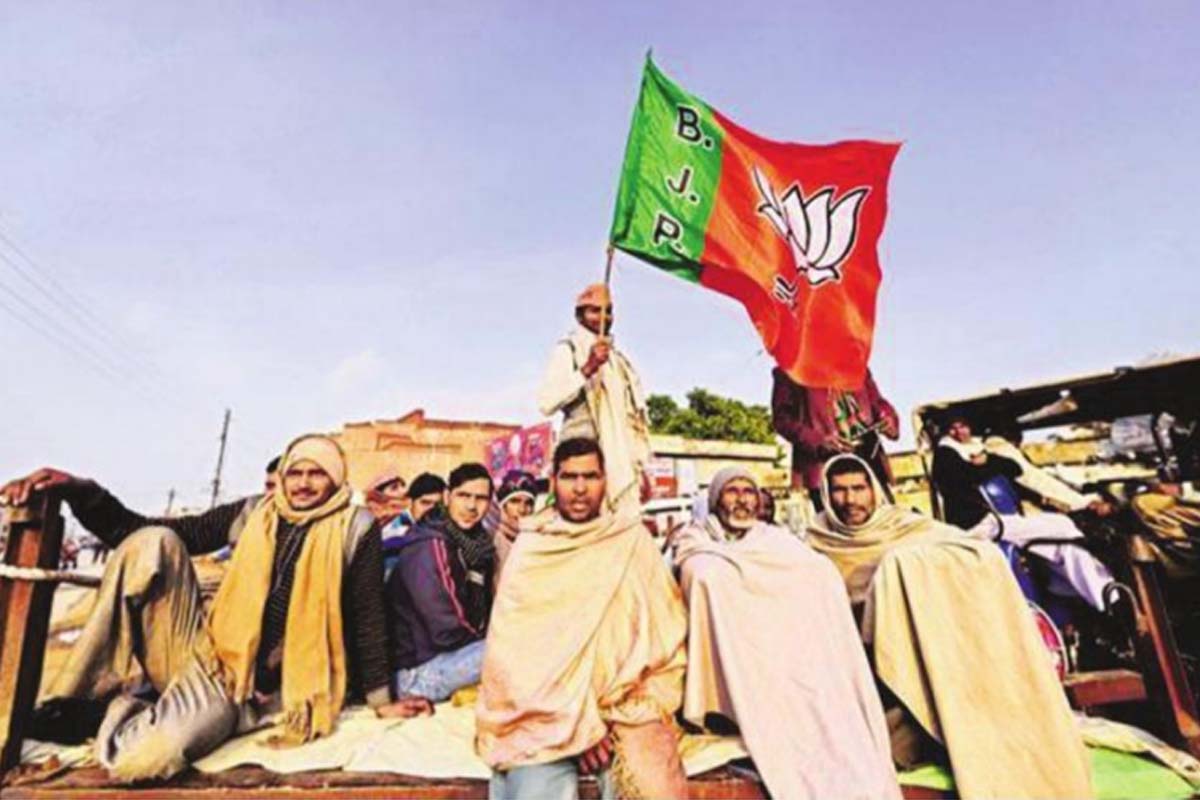LS vote referendum on reservation: Telangana CM
The Telangana chief minister also accused the BJP of trying to stop OBC reservation put forward by the Mandal Commission.
A younger BJP and/or RSS leader would be clamouring to take charge of the BJP. The RSS could ride on Modi’s coattails today and for the ensuing many years, and then hit a brick wall.

Photo: SNS
Shazia Ilmi. Asifa Khan. Zafar Sareshwala (not yet a member of the BJP). MJ Akbar. Tom Vadakkan. Brand Modi was able to attract a bunch of minorities to the BJP, to add to the old-timers who were Mukhtar Abbas Naqvi, Shahnawaz Hussain and Najma Heptulla.
But is the new number sufficient for a party that aspires to be the natural party of governance in a country that is so diverse religion-wise? In 2019’s general elections, the BJP polled about 10 per cent of the minority (Muslim and Christian) vote. This figure was piffling.
To be a party somewhat representative of minorities, the party should be able to garner at least 30 per cent of their vote. Modi was able to win about 30 per cent of the Muslim vote in Gujarat’s state elections of 2012. This was a stunning achievement, given the contempt in which minorities in other parts of India seem to have held him in then.
Advertisement
They perhaps were unaware of the numerous schemes for Muslims that Modi had launched in Gujarat. Modi also marginalized the RSS in Gujarat and its offshoots like the VHP. He made Praveen Togadia go from a hero to virtually a zero. Such moves of Modi did not go unnoticed by the Muslims of Gujarat.
But Gujarat is a relatively small state, set in a corner of the country. In addition, the RSS is mostly-Maharashtrian run, and there has been historical friction between the Gujaratis and the Maharashtrians.
So the RSS let Modi do what he did in Gujarat. At the centre though, Modi has had to squarely deal with the RSS. His numbers two, three, and four ministers are all strongly affiliated with the RSS.
Amit Shah has just let loose a volcano in terms of J&K on the nation. Instead of coping with the aftermath of the volcano and alleviating fears of demographic change in Kashmir, Shah is claiming that the politics of nonappeasement is over.
Non-appeasement has always been code-word used to signify the stoppage of appeasement of Indian Muslims. But how exactly are India’s Muslims being appeased? According to the undeniably-credible Sachar Committee report, they rest at the very bottom of the nation’s totem pole.
Amit Shah is the de facto number two man in the cabinet, while Rajnath Singh is only number two de jure. This structure erodes Singh’s credibility instantly. In addition, he gives the impression of being a rough-hewn man with limited capability in English, far removed from the international sophisticate image that Modi has been able to cultivate.
Finally, there is the RSS’s favourite, Nitin Gadkari. Gadkari has come far since he was plucked from the hinterlands of Maharashtra by Mohan Bhagwat, the RSS’s chief, to be the BJP’s head in 2009.
Gadkari seems like a cosmopolitan man, but he is too in the hock to the RSS to be seen as friendly to minorities. Even at the centre, Modi has kept the RSS in check. Imagine a scenario where Modi is not there. Shah, Singh, and Gadkari would all be controlled by the RSS. Minorities do not like the RSS, and that’s an understatement.
So the RSS will have to make changes to make itself more palatable to minorities. India’s traditional big-tent party is the Congress, which attracts people of all stripes and religions, and that too in leadership positions. It is in seeming terminal decline right now, but so seemed the BJP in 2009. Modi resurrected the BJP.
Someone like Priyanka Gandhi could resuscitate the Congress. India’s moderate Hindu deserted the Congress for Modi, not for the BJP or the RSS. If Modi were not to be there, the moderate Hindu would find it hard to stay put with the extreme ideology of the RSS.
A charismatic leader like Priyanka could attract the moderate Hindu back. Hence the BJP and the RSS should not delude themselves that they emerged victorious in 2014 and in 2019.
It was Modi, a man who rose like a phoenix, who won both in 2014 and in 2019. In both years’ general elections, Modi could have made a lamppost stand for elections, and that lamppost would have won. Fortunately it will be a while before Modi departs from the scene.
But political parties have to plan 10 years ahead. In 10 years, Priyanka will be just 57, still young for Indian politics. Modi would be 78 and getting on. A younger BJP and/or RSS leader would be clamouring to take charge of the BJP. The RSS could ride on Modi’s coattails today and for the ensuing many years, and then hit a brick wall. Or it could fundamentally restructure itself to resemble the India of the early twenty-first century, and not that of the early twentieth century when it was founded. Can it do so?
Advertisement